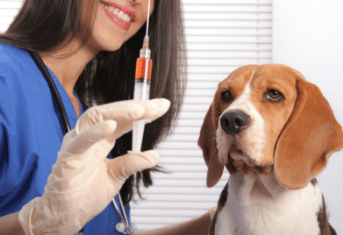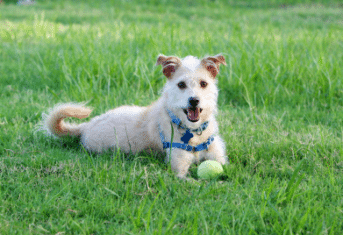National Pet Cancer Awareness Month: Pet Cancer Treatment Options, Part I

National Pet Cancer Awareness Month: Pet Cancer Treatment Options, Part I
November has been designated National Pet Cancer Awareness Month to raise awareness about the causes, prevention and treatment of dogs and cats with this terrible disease. According to the Morris Animal Foundation, there are six million new pet cancer diagnoses every year. That number of diagnoses translates to millions of pet cancer treatments each year. Traditionally, surgery, chemotherapy and radiation therapy were considered the mainstays of cancer treatment in both people and pets, but recent innovations add immunotherapy and targeted drug therapy to the growing list of cancer treatments for pets.
To raise awareness of the possible treatments for pet cancer, Fur the Love of Pets will feature this two-part blog on cancer treatment options in pets.
Surgery
Surgical removal as a treatment for cancer has been practiced since Roman times. Perhaps because of a lack of surgical skill, coupled with a lack of techniques for general anesthesia, surgery was not particularly effective, if we believe the Roman physician Celsus. He wrote, “After excision, even when a scar has formed, none the less the disease has returned.” Today we know much more about how to treat canine and feline cancer patients with surgery. Tumors such as canine breast cancer, soft tissue sarcomas and mast cell tumors are potentially cured by surgical excision alone. The key to treating many types of tumors with surgery is to remove a wide swath of normal skin and tissue around the tumor to ensure complete removal of the cancer-causing cells. Anyone with a pet treated with surgery for mast cell tumor or soft tissue sarcoma can attest to the fact that the actual incision was much bigger than they anticipated. Current guidelines recommend as much as 3cm (1.25 inches) of normal tissue be removed on all sides of the tumor as part of a cancer surgery.
Surgical treatment of pet cancer recently became highly specialized when the American College of Veterinary Surgeons (ACVS) recognized the Veterinary Society of Surgical Oncologists (VSSO). Members of VSSO have achieved a high level of competence in cancer surgery though their participation in a surgical oncology fellowship following certification by ACVS.
Radiation Therapy
The second cancer treatment to be widely used in humans was radiation therapy. Veterinarians began using radiation therapy in pets in the early 1980s. Board certified veterinary radiation oncologists treat a wide variety of tumors including brain tumors, thyroid tumors and melanoma.
The radiation therapy equipment The AMC currently uses is our third machine since 1989. The first two used cobalt as the radiation source. Now we have a linear accelerator with electron beam capabilities, image modulated radiation therapy and stereotactic radiosurgery – a huge advancement in technology from our first rudimentary cobalt machine. To ensure exact positioning for each treatment, a customized “bed” is created for each patient. View a video of one of our vacuum assisted positioning devices being used in a feline patient.
Want to learn how to recognize signs of cancer in your pet? View our slide show on the “Ten Warning Signs of Cancer in Pets.”

































